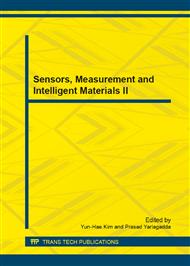p.1391
p.1397
p.1402
p.1406
p.1410
p.1414
p.1419
p.1424
p.1428
Experimental Study on High-Pressure Fog Cooling Systems in Greenhouses
Abstract:
This paper describes the study of High-Pressure Fogging Cooling Systems. A new ruby-orifice nozzle is designed because of the inefficiency of the stainless steel-orifice nozzle which wear out easily and expensive in service at present. The characteristic of the new nozzle is analyzed and the fog droplet size of the new nozzle is measured by MPA Malvern Particle Analyzer. The diameter of droplet size (VMD ) which is 500 mm far from the nozzle is less than 30μm when the water pressure in the pipe is more than 5 MPa. In addition, a high-pressure fog cooling system is designed and is conducted in a greenhouse of 6 by 30 meter. The study shows: the high-pressure fog cooling system is efficient on some conditions of requiring a certain wind velocity and a certain humidity outside in open greenhouses.
Info:
Periodical:
Pages:
1410-1413
Citation:
Online since:
December 2013
Authors:
Keywords:
Price:
Сopyright:
© 2014 Trans Tech Publications Ltd. All Rights Reserved
Share:
Citation:


